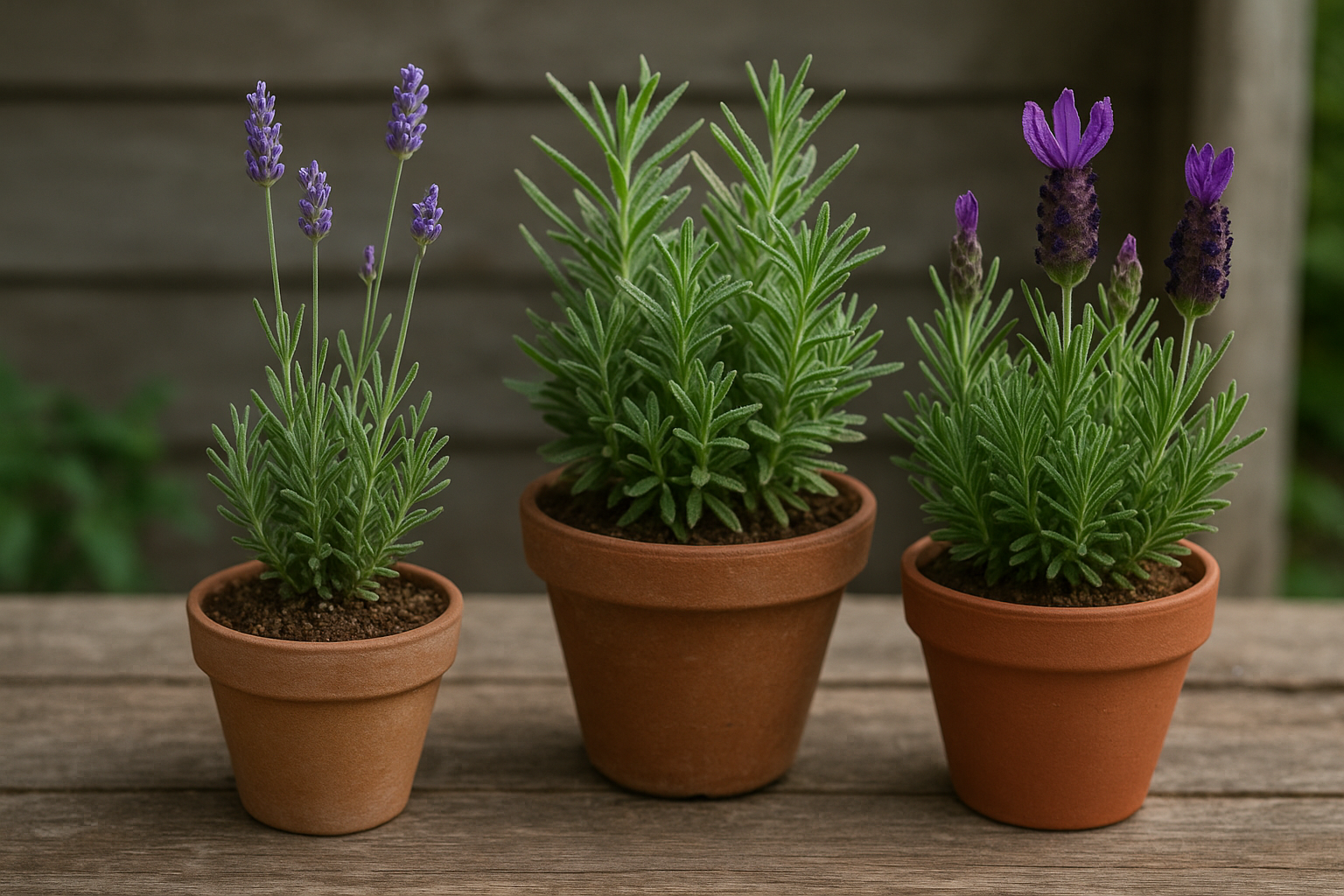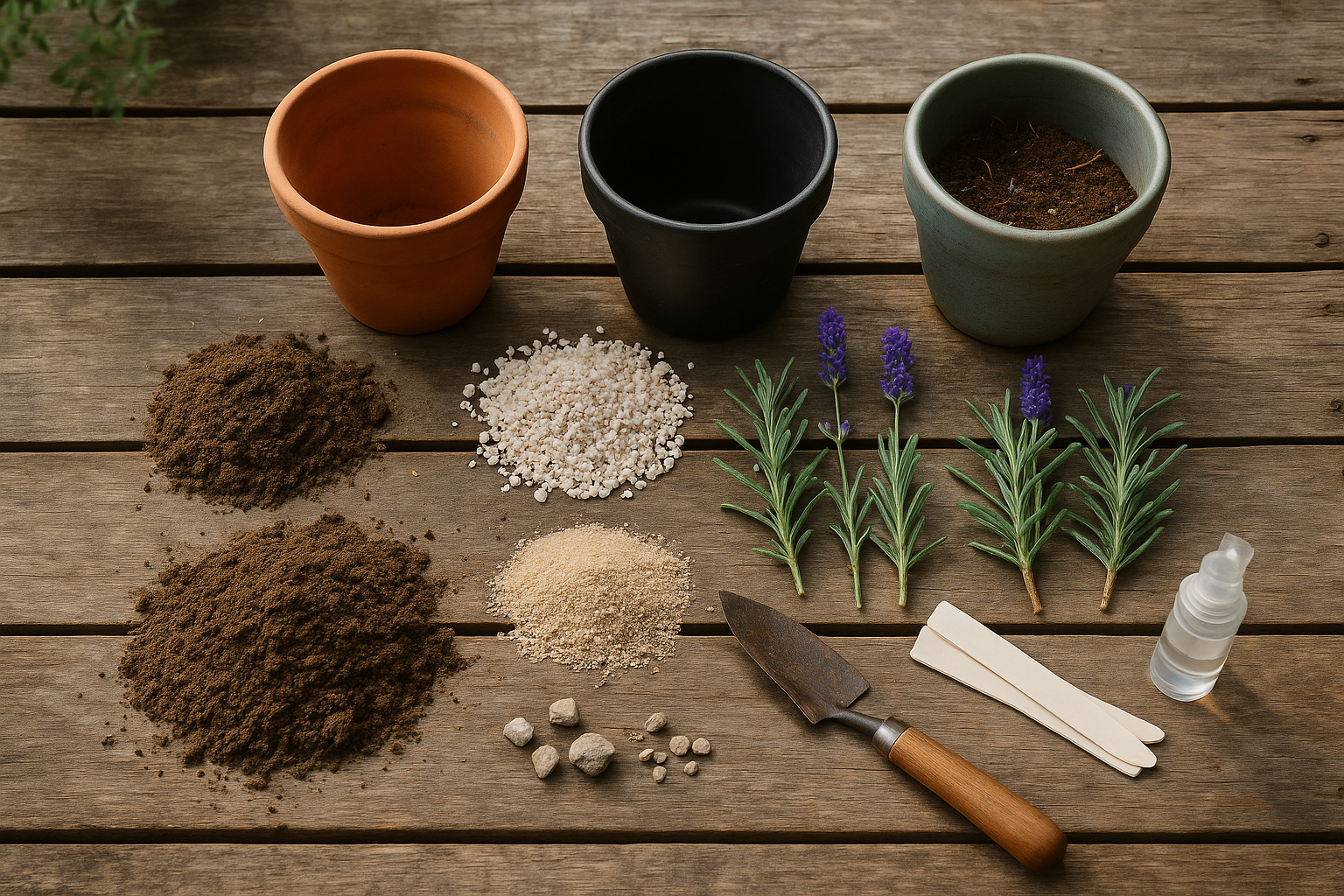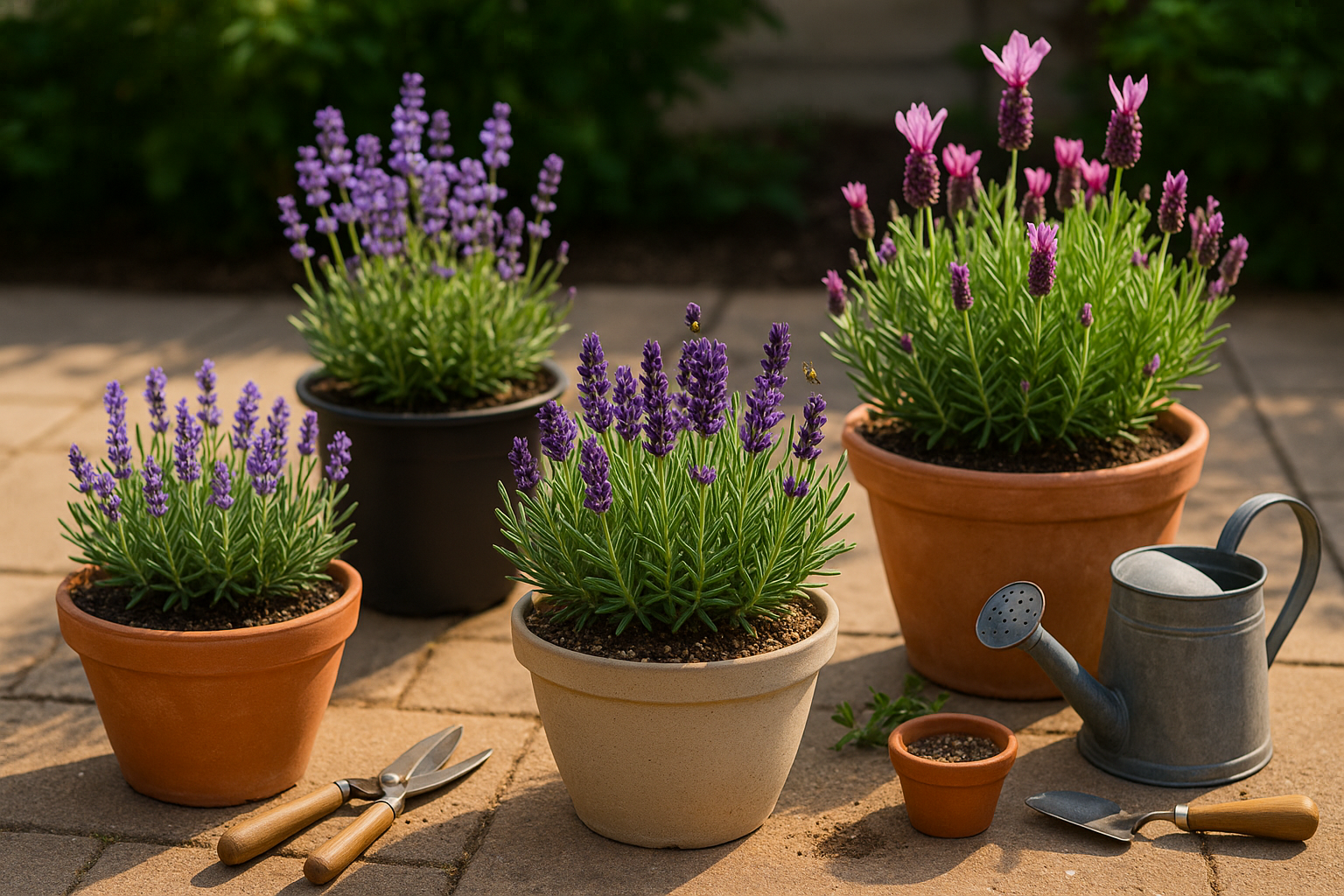Choosing the Right Lavender Variety for Pots

Choosing the right lavender variety is essential for successful container gardening, as not all lavenders thrive in pots or every climate. English lavender (Lavandula angustifolia) is a popular choice for containers due to its compact growth and high tolerance for cooler climates, making it a reliable option for gardeners in temperate regions. Its tidy growth habit fits well in small to medium-sized pots on patios or balconies.
French lavender (Lavandula dentata), on the other hand, prefers milder climates with warmer minimum temperatures. It’s more tolerant of humidity but can quickly outgrow smaller containers, so it’s best suited to larger pots that provide room for its bushier form.
Spanish lavender (Lavandula stoechas) is known for its striking blooms and thrives in hot, dry climates—especially where winters are mild. This variety generally stays more compact than French lavender, making it a great pick for medium pots and sunny windowsills.
When selecting a variety, consider your local weather and the size of your container. A pot that’s too small will stunt growth and increase the risk of root rot, while a pot that’s too large can delay flowering. Always ensure your container has excellent drainage, as all lavenders dislike soggy roots.
If you’re unsure where to start, try a compact English lavender in a 12- to 16-inch pot. You can expand from there as you gain confidence, adjusting your choice to suit your unique outdoor or indoor environment.
Selecting the Best Pot and Soil

Choosing the right pot for your plants is more important than many gardeners realize. Always opt for a container with drainage holes at the bottom—this prevents water from pooling around the roots and causing rot. Pot size matters too; pick one that’s slightly larger than your plant’s root ball to give it room to grow, but avoid oversized pots, as too much soil can hold excess moisture.
The material of your pot also affects plant health. Terracotta pots are breathable and excellent for most houseplants, but they dry out quickly. On the other hand, plastic pots retain moisture longer and are lightweight—making them ideal for busy gardeners or those who might occasionally forget to water.
Just as important is the soil you fill your pot with. Look for a mix labeled “well-draining” or “potting mix” rather than garden soil, which can become compacted in containers. A loose texture helps roots breathe and reduces the risk of overwatering. Slightly alkaline soil, with a pH around 7 to 7.5, is perfect for many houseplants.
To further boost drainage and prevent soggy soil, mix in amendments like coarse sand, perlite, or a handful of gravel. For example, combine two parts potting mix with one part perlite and a scoop of sand for a light, airy blend that most plants love. Remember, the right pot and soil duo is key to healthy, happy plants that thrive in your home.
Planting and Positioning for Maximum Sun
Lavender thrives on sunlight—aim for at least 6 to 8 hours of direct sun each day for robust growth and fragrant blooms. Outdoors, choose a spot with full sun exposure, away from structures or trees that might cast shade during peak daylight hours. Indoors, south-facing windows are ideal; if that’s not possible, pick the brightest spot available and consider supplementing with a grow light to mimic natural sunlight.
Planting lavender in containers? Use pots with excellent drainage and fill them with a gritty, well-draining soil mix. When transplanting seedlings or young plants, be gentle with their roots—loosen the root ball slightly before settling it into the new container, placing the crown level with the soil surface. Space each plant so air circulates freely, as overcrowding can cause fungal problems and weak stems.
For container placement, rotate pots every few days to ensure the plant receives light from all angles, promoting even growth and preventing legginess. If growing indoors, turn or reposition containers weekly and keep them a short distance from warm windows to prevent leaf scorch. These steps help lavender develop sturdy stems, a compact size, and a healthy mass of leaves—essential for both beauty and resilience.
If you notice your lavender stretching or reaching toward the light, it’s a sign to increase sun exposure, move it to a brighter location, or adjust your grow lights to encourage a stronger, more upright plant.
Watering and Feeding Container Lavender
When growing lavender in containers, maintaining the right watering schedule is key to keeping your plants healthy. Aim to water your lavender deeply but infrequently—usually once every one to two weeks is enough, allowing the soil to dry out in between. During hot, dry spells, check the top inch of soil; if it feels dry, it’s time to water.
Be careful not to overwater. Signs of too much moisture include yellowing leaves, soggy potting mix, and limp, wilting stems. On the other hand, underwatering results in dry, brittle leaves and stunted growth. It’s best to set a general routine but always adjust watering based on weather conditions and soil dryness rather than sticking rigidly to a calendar.
When it comes to feeding, lavender prefers lean soils and minimal fertilizer. A single application of a slow-release, low-nitrogen fertilizer in early spring—like a 5-10-10 blend—is sufficient for the entire season. Too much fertilizer, especially high-nitrogen types, tends to encourage leafy growth at the expense of fragrant blooms.
The biggest threat to container-grown lavender is waterlogged roots, which can cause root rot and decline. Make sure to use pots with ample drainage holes and a well-draining soil mix, such as one blended with perlite or sand. Elevating containers on pot feet or bricks can also improve drainage.
By respecting lavender’s preference for dry soil and light feeding, your container plants will reward you with lush, aromatic growth and plenty of beautiful blooms.
Pruning, Harvesting, and Seasonal Care
Pruning lavender is essential for keeping your plants full, healthy, and blooming beautifully year after year. Each spring, as new growth begins, trim back about one-third of the plant, being careful not to cut into the woody stems. This encourages bushy new growth and more flower spikes.
Throughout the growing season, regular deadheading—snipping spent flowers—will encourage the plant to keep producing blooms. When it comes to harvesting, the best time to pick lavender is in the morning after the dew has dried but before the midday sun. This is when the essential oils are at their peak.
Use clean, sharp scissors or pruners to cut flower stems with a few leaves attached, preserving both fragrance and freshness for culinary uses, like infused syrups, or craft projects such as sachets. For leaves, select tender green shoots for the best flavor and aroma.
As fall approaches, shift to seasonal care: reduce watering, since lavender prefers drier roots in cool weather, and avoid heavy fertilizers late in the season. In colder climates, overwintering potted lavender is essential. Move pots to a sheltered spot, like an unheated garage or covered porch, to protect plants from deep freezes.
Wrap containers with burlap or bubble wrap for extra insulation, and let the soil dry out slightly between waterings to avoid root rot. With thoughtful pruning, mindful harvesting, and simple seasonal care, your lavender will thrive and reward you with years of beauty and aromatic harvests.
Companion Planting and Problem Prevention
When growing lavender in containers, choosing the right companion plants is key to healthy, vibrant growth. Lavender thrives in full sun and well-draining soil, so pair it with herbs like rosemary, thyme, or sage—Mediterranean natives that enjoy similar conditions and won’t compete for water.
Avoid planting lavender with moisture-loving companions like basil or mint, which prefer richer, wetter soil; these can create an overly damp environment that may stress or even kill your lavender. To prevent root rot, always use pots with good drainage holes and add a layer of gravel at the bottom to improve airflow.
If you notice leggy growth, your lavender is likely craving more light—move it to a sunnier spot and trim back long stems to encourage bushiness. Keep an eye out for pests like aphids or whiteflies; a quick blast of water or natural insecticidal soap usually does the trick. Regularly check soil moisture with your finger—let the top inch dry out before watering again.
With these practical tips, you can create a healthy container mini-garden where lavender and its companions flourish side by side.
